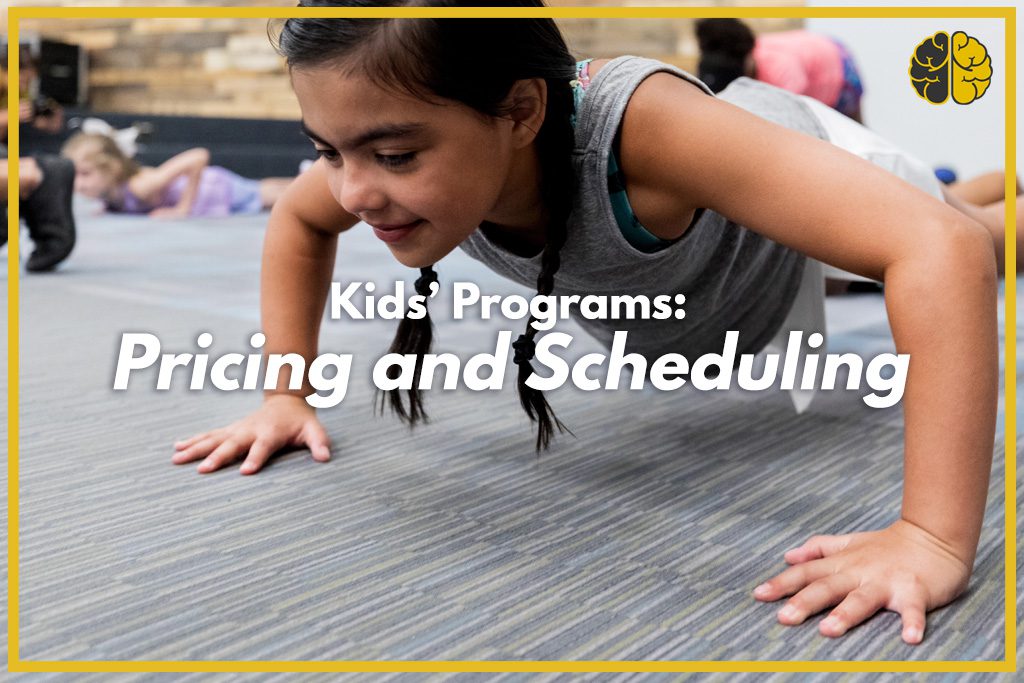Kids need your help.
As more countries and states cancel recreational activities for adults and kids, gyms are stepping up to fill the gap.
When my kids’ hockey seasons were cancelled, I gave them a choice: Sign up for the teen programs at Catalyst or ride bikes on Zwift and lift weights with dad.
Both chose Catalyst. Weird.
Kids classes, teen “leagues” and summer camps are all missing from the family routine—and they’re not eating up space in the family budget right now. You have an opportunity to fill a gap and grow your business. This is the best time to keep kids off screens and give them the tools to shape their fitness for life.
How to Price Kids and Teen Programs
Here’s a ridiculous mistake I made in my gym: I priced kids’ programs at about 50 percent of adult programs—but this was 15 years ago, before anyone was coaching kids programs well.
Now we know that programs for children should be priced at least the same as adult programs—or they should be priced higher.
If you’re not sure where to start, call the local gymnastics studio and the best local martial-arts school. You should be priced at least the same as gymnastics programs and much higher than martial-arts training. Gymnastics schools require qualified coaches to teach skill progressions in small groups. Martial-arts schools have giant classes of kids moving in unison. You’re more like gymnastics than martial arts.
If you think your prices are too high, start looking at local sports leagues. The price for a 12-year-old to play hockey in my city ranges between $650 and $7,000 (not a typo!) for a five-month season. Travel and equipment are extra.
How to Split up Age Groups
For many years, we ran three age groups for kids and teens at Catalyst:
- A “tots” program for ages 5-8.
- A Junior Varsity program for ages 9-12.
- A Varsity program for ages 9-16.
The problem? You’ve seen it: “My kid is advanced for her age!”
We solved this problem with a progression system for kids. Now, when a parent wants a daughter to train with the older kids, we say: “Sure. There’s a pathway to level up ahead of age. Here’s the criteria: Your daughter only has to test at Level 6 in each of these skills to qualify for the senior program. You can book a personal training session whenever you’d like her to try the test.”
That ends the discussion—and gives the kid some goals. The best part? As soon as the kids are integrated into the group, they rarely want to train with older kids outside of their peer class.
The Report Card
When we take in teams of athletes, we start with an assessment.
Athletes are given a report card after the first test, and it’s updated with a post-test at the end of the session. This way, kids, parents and coaches can see real improvement. It’s is also very effective for marketing the program: One kid on a hockey team arrives at tryouts and says, “Hey, coach. Here are my numbers for stamina and power.” The coach will then inquire how the kid was scored.
Daily Food, Mood and Exercise Tracking
We use the Varsity Logbook to keep track of these elements. You can easily create a simple version to log the metrics that are important in your program.
The Varsity Sport Program
Teens who want to compete at CrossFit (or other sports) and work on character skills such as public speaking can opt into Varsity Sport after a year in Varsity.
In the Varsity Sport program, teens do workouts requiring greater skills. You won’t see bar muscle-ups in our regular teen classes, but you will in Varsity Sport. You’ll also see assignments for public speaking (helping with the Junior Varsity classes or presenting to adult gym members) and opportunities for paid work. Varsity Sport kids work at the gym as weekend attendants, respite care workers (via the Ignite program) and peer tutors.
Scheduling Kids Classes
The best times for kids classes are around their school hours (late afternoon). Many are engaged in sports in the evenings and obviously can’t attend during school hours. Saturday mornings are always our most-attended classes at Catalyst.
Younger kids need shorter classes. Older kids can handle a full hour, as long as there are breaks between warm-up, skill and WOD periods.
- 8 and younger: 30-minute classes.
- 8-12: 45-minute classes.
- 12 and older: 60-minute classes.
Because younger kids require more supervision, the best way to coach 10 5-year-olds is to run 30-minute classes of five kids each. With older kids, you can run larger classes for longer.
One key I’ve learned over the years: Set the expectation that the client won’t attend every class. Parents are used to the “don’t skip practice or you’re benched” culture of most sports. If their kid can’t attend on Wednesdays, they’ll believe they “can’t do this sport.” So we say: “Plan to attend eight times per month to get good results, but you can attend up to 12 times if you like.”
Resources for coaches: “Coaching Kids and Teens Without a Bricks-and-Mortar Gym”
Other Media in This Series
“Building Youth Programs”
“Hiring a Kids Program Coach”
“Growing Youth Programs”
“Jeff and Mikki Martin: What’s Best for Kids”

